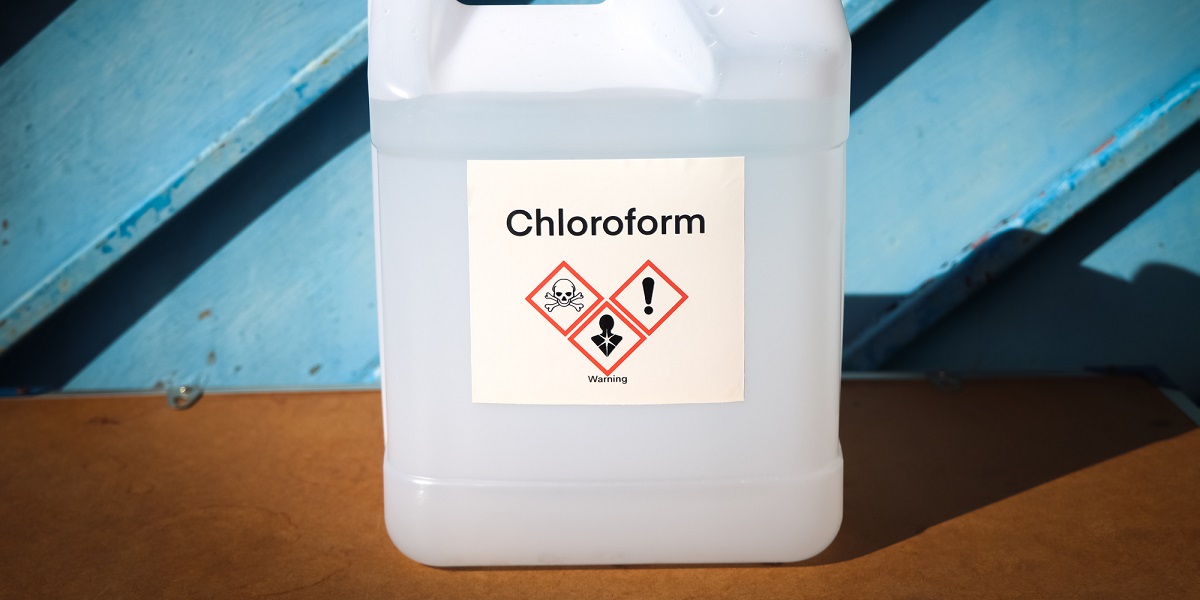One of the scariest realities of war is that doctors often lack supplies and have to do major surgeries and amputations without anesthesia. So, it’s logical that a serious prepper would want to learn how to make chloroform “just in case.”
Compared to other survival chemicals and meds, making chloroform is surprisingly easy. I will tell you how here – but I’ll also explain why you probably don’t want to go this route.
Why DIY Chloroform Is a Terrible Idea
Chloroform Is Dangerous!
Excluding opium and alcohol, chloroform is one of the oldest forms of anesthesia. It was developed in the 1840s and was widely used until the 20th century.
While chloroform revolutionized surgery at the time, it was incredibly risky. The chloroform fatality rate was 1 in 3,000!
Taking chloroform could cause “Sudden sniffer’s death” – or a fatal cardiac arrhythmia. There were also other catastrophic risks, such as choking on your own tongue.
There are many other risks associated with chloroform, ranging from kidney damage to cancer. Admittedly, though, there probably aren’t your most significant concerns if you are in a situation where you are considering a home anesthetic.
Bear in mind that all anesthetics are dangerous. In the 1960s and 70s, one in 10,000 to 20,000 patients would die. And that was with modern anesthetics administered by a doctor.
The point is that you could easily kill your patient with chloroform instead of helping them.
Chloroform Doesn’t Knock People Out Quickly
Hollywood movies always show someone sneaking up behind their victim with a rag soaked in chloroform, holding it against their mouth for a second, and the person instantly loses consciousness.
In real life, chloroform does NOT work this quickly.
It takes approximately 5 minutes of breathing in chloroform fumes for a person to lose consciousness. And that’s assuming you got the dosage right. For this reason, using chloroform in a survival situation isn’t realistic.
It Is Also Volatile
Another issue with the Hollywood scenarios is that chloroform is highly volatile: it will break down quickly when exposed to air.
There’s no way a bad guy could be lurking in the shadows with a chloroform-drenched rag waiting for their victim. By the time the victim appeared, the chloroform wouldn’t be viable.
So, if you are thinking of making chloroform to stockpile, forget about it. The chloroform would likely be useless by the time you needed it.
Is Chloroform Legal?
In the United States, chloroform is a controlled substance. It is not legal for individuals to buy it unless they do so as part of a lab, university, school, or other entity with a lawful use.
Alternatives to Chloroform for Survival Anesthesia
Alcohol is probably the best legal survival anesthetic. Most herbal anesthetics aren’t strong enough for surgeries, though high doses of wild lettuce would be your best bet.
If you are OK with illegal anesthetics, then opiates have long been used as anesthesia. Most of these are much safer than chloroform, though you cannot make them yourself, and trying to buy them could land you in jail.
The best alternative?
IMO, it’s to befriend a doctor. While preppers like to spout the “lone wolf” idea when it comes to survival, no person is capable of being 100% self-sufficient. The best way to be fully prepared for disasters is to form a team of survivalists with skills to share with the group.
How to Make Chloroform
Ingredients and Supplies:
- Bleach (Sodium hypochlorite): It must be 5% to up to 10% strength without any perfumes or additives. Do not use bleach stronger than 10%, as the reaction will create too much heat.
- Acetone: Avoid using nail polish remover as it usually has additives. It’s better to use pure acetone, which you can find in paint or hardware stores.
- Two glass or plastic containers
- Glass jar
- Glass or plastic stir stick
- Ice: This is important because the chemical reaction will cause the mixture to heat up.
- Separation funnel
- Gas mask
- Gloves
Instructions
- Put the bleach and acetone in the refrigerator to chill it.
- Pre-measure the acetone and bleach in the two containers you have. The ratio is one part acetone to 50 parts bleach. That works out to 10ml of acetone to 640ml of bleach. You can also use 1 tsp. acetone to 1 cup of bleach, but I recommend using metric measurements as they are more precise. DO NOT MIX THEM YET.
- Put bleach in the glass jar.
- Add a few cubes of ice to the bleach. The higher the concentration of bleach, the more ice you will need to use.
- Add the acetone to the bleach. Use your mixing stick to swirl it around.
- Let the mixture sit for 30-60 minutes. The mixture should become cloudy and vapor will come off of it. Do not inhale this!
- Touch the outside of the glass jar. If it is cool, you can proceed to the next step. If it isn’t, wait for it to cool down.
- You should see a white powder or bubble at the bottom of the jar. This is chloroform.
- Pour off the top of the mixture, leaving the chloroform at the bottom.
- Use a separation funnel to extract the chloroform.
Distilling the Chloroform
If you want to use the chloroform as an anesthetic, you must distill it to purify it. The video below shows you how to distill chloroform. Most people do not have a distiller at home, so you can see how making chloroform would be impractical in a survival situation.
Stabilizing the Chloroform
When exposed to UV light and oxygen, chloroform eventually breaks down into a deadly gas called phosgene. If you want to store the chloroform for more than a few days, you’ll need to add 1% ethanol by mass to the chloroform. This stabilizes it so phosgene doesn’t form.

















